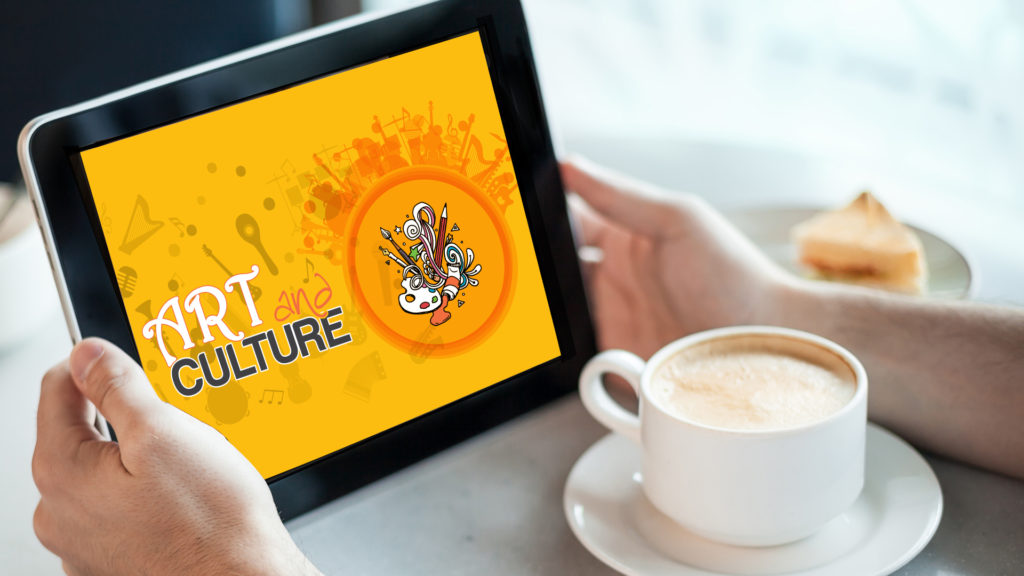Art and Culture in times of web proliferation
Artists and ardent culture connoisseurs have often criticised the growing trend of digital dependence hurting the art and culture space; however, the future might look back at the 21st century as a period of renaissance in art and culture. Let’s find out how!
Moral policing versus community discipline, the longevity of a piece of art and the secret to reach millions of fans, technology in cultural presentations and cultural annihilation from a classic form – these are all subjects that we debate on various platforms now. We presume and sometimes opine that technology has threatened the old order in the art businesses, which includes the downfall of the erstwhile music industry, the gradual demise of cable subscription, newspaper subscription and even a slow shift in the movie-watching or book-reading practices.
Looking at the scenario from a sovereign perspective, you might also consider this period as a phase when things are turning around. Especially in India, where the number of netizens is on a rise, the perception of art and culture and the diversity of it might as well not be remembered as a period of destruction but that of rebirth.
Is Internet killing art?
In India, the internet for the masses arrived in the last decade, but, it gathered pace quite interestingly over the last two years. Now, in a country with so much to offer to the art and culture business, the traditional mediums have somehow failed to add an extra wing to the alternatives. Notwithstanding the motion, Internet has added new voices in every other cultural medium, whether it is films or music, visual arts or books!
The open platform has created new windows for artists to explore their talents and reach out to their niche audience easily.
From celluloid and LP records to Netflix and YouTube, the world has already come a long way in quick time. The formats have evolved and barriers have shrunk if not vanished. Like vehicles, airplanes, human beings, the numbers have increased, but the most crucial value addition of Internet to the society in large is the choices it has empowered people with. Whether subscribing to mediocrity at a large scale or finding a platform to customise demand and supply, Internet has successfully opened up avenues and created horizons that were earlier either non-existent or unknown to the masses.
Contrary to what people might exercise as a thought to argue, the art and culture business in India and the world have been at great disservice when Internet hadn’t reached all. There was a truncated sense of partiality in utmost refinement and something just remained inadequately undemocratic.
Resurrection reemployed
The Internet taught a whole generation that content was not something you really had to pay for. The scale-only, ad-based business model in the erstwhile art and culture scene in India left viewers and listeners in a world with fewer options and with no room for smaller acts and subtle niches to bloom.
This can be considered unsustainable and gloomy rather than the present intensity of people hooking on online mediums for rich and diverse content. If the subscription model of watching movies, listening to music, reading newspapers and books can be revolutionised, it will certainly be a resurrection for the art forms and the cultural space of the country and broadly the world.
We already know about Amazon Prime, Netflix, Hulu, HBO, Spotify and Apple Music. However, art lovers are also paying for smaller acts and lesser mainstream content. People are subscribing to podcasters, comedians, YouTube stars, novelists and comic book artists. They are even paying for news. Although a lot of ground is yet to be covered, the profound shift in a way to support new cultural talents is rather encouraging compared to what critics perceive as abated.
The world is becoming a global village by virtue of the Internet. The New York Times reported the rising subscription numbers for mediums such as Netflix, Spotify and the likes breaking records, and the social media channels have progressively bridged the gap between the artists and their fans. So, what was apparently a peril can be alternatively seen as a boon! Albeit the viability of Internet as the prime medium to practice and propagate art, the web promises a more sustainable way ahead. Let’s wait and watch!










